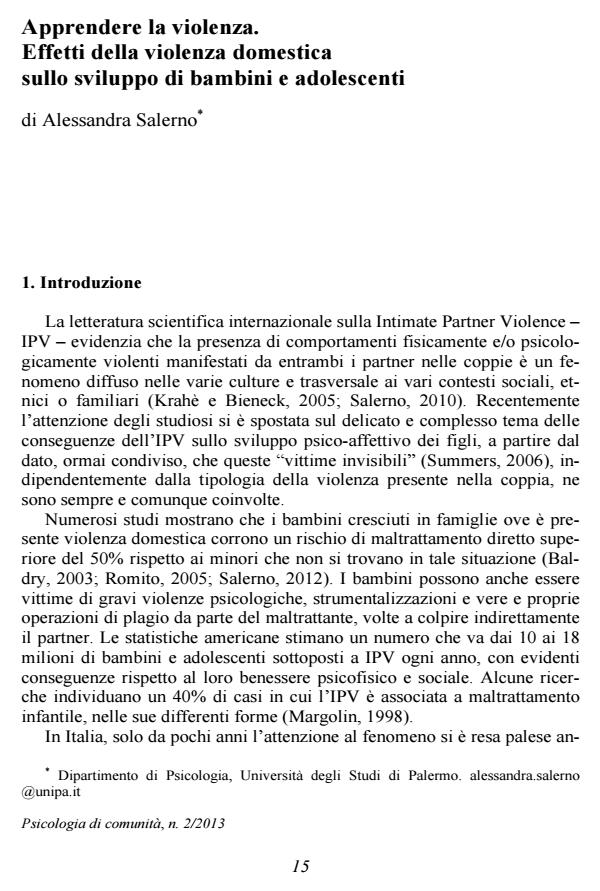Learning violence. Effects of domestic violence on children’s and adolescents development
Journal title PSICOLOGIA DI COMUNITA’
Author/s Alessandra Salerno
Publishing Year 2014 Issue 2013/2
Language Italian Pages 8 P. 15-22 File size 30 KB
DOI 10.3280/PSC2013-002002
DOI is like a bar code for intellectual property: to have more infomation
click here
Below, you can see the article first page
If you want to buy this article in PDF format, you can do it, following the instructions to buy download credits

FrancoAngeli is member of Publishers International Linking Association, Inc (PILA), a not-for-profit association which run the CrossRef service enabling links to and from online scholarly content.
Among the reflections of the authors on the origin of the violence, those ones about the intergenerational transmission are particularly interesting. Specifically, men and women involved in IPV seem to have experienced abuse and neglect directly or indirectly in their families of origin; witnessing IPV is called assisted violence and concerns assisting any forms of abuse (physical, verbal, psychological, sexual or economic) on someone emotionally significant to the child. This condition seems to be a precursor to behavioural and relational difficulties that would be caused by learning behaviours showing aggression, devaluation of the partner, exercise of power and so on. In both direct and indirect experiences, the probability to live in adult relationships the same forms of abuse experienced in childhood, is particularly high. In this paper, we want to introduce some of the most significant theoretical and empirical international contributions about the effects of domestic violence on children and adolescents, with particular attention on prevention and treatment.
Keywords: Domestic violence, couple, family relationships intergenerational transmission, childhood, adolescence
- Violenza domestica e gravidanza. Conseguenze in fase prenatale e neonatale dell'Intimate Partner Violence Alessandra Salerno, in MALTRATTAMENTO E ABUSO ALL'INFANZIA 2/2015 pp.37
DOI: 10.3280/MAL2015-002003
Alessandra Salerno, Apprendere la violenza. Effetti della violenza domestica sullo sviluppo di bambini e adolescenti in "PSICOLOGIA DI COMUNITA’" 2/2013, pp 15-22, DOI: 10.3280/PSC2013-002002